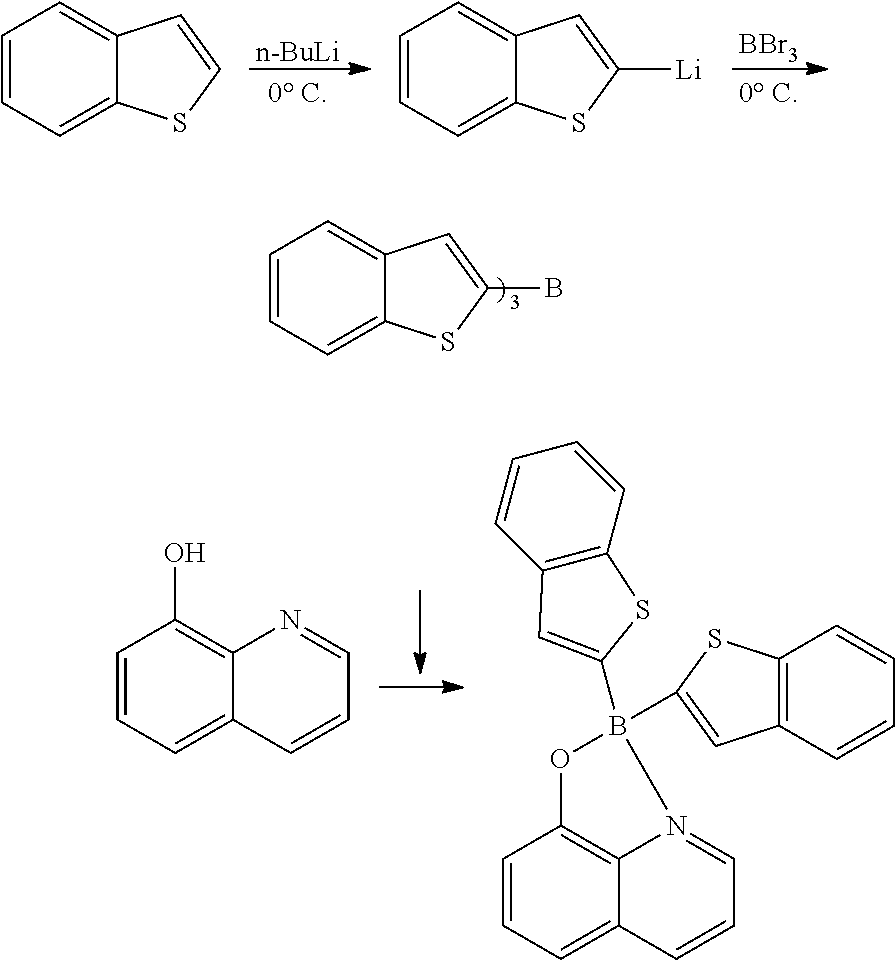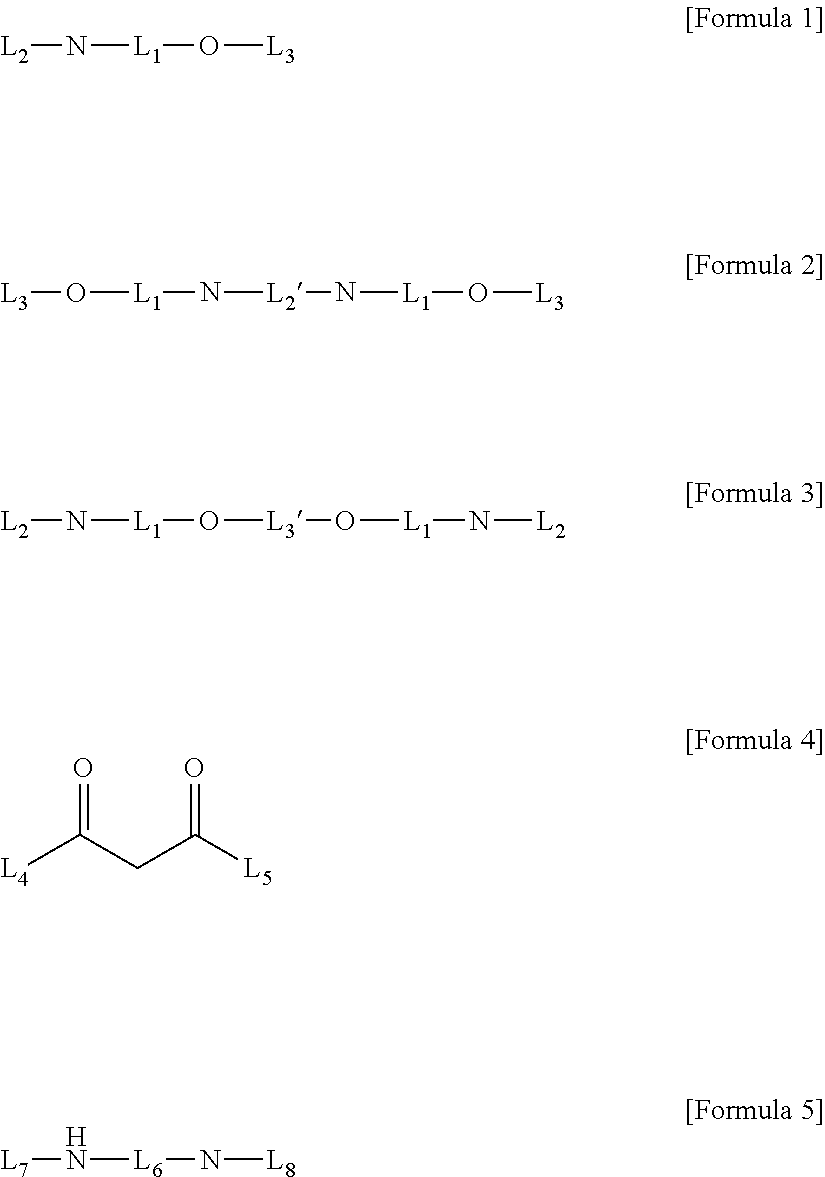Method for preparing four-coordinated organic boron compound
a compound technology, applied in the field of four-coordinated organic boron compound preparation, can solve the problems of high cost, relatively difficult use, high cost of boron compound with required optical properties, etc., and achieve the effect of improving the yield of four-coordinated organic boron compound
- Summary
- Abstract
- Description
- Claims
- Application Information
AI Technical Summary
Benefits of technology
Problems solved by technology
Method used
Image
Examples
example 1-1
[0108]Phenylboronic acid (1.1 g, 9.0 mmol) and K3PO4 (636.8 mg, 3.0 mmol) were each added to a solution of 8-hydroxyquinoline (145.1 mg, 1.0 mmol) in 1,4-dioxane (50 mL), and the resultant was heated to reflux for 20 hours. The reaction solution was concentrated under vacuum, and EtOAc (10 mL) and water (10 mL) were added to the remaining concentrate to separate the organic layer. The aqueous layer was extracted with EtOAc (10 mL). The combined organic layers were dried over anhydrous Na2SO4 and concentrated under reduced pressure. The resulting solid residue was recrystallized from ethanol to obtain the target compound (250 mg, 81%).
[0109]mp 205-207° C. (lit.1 205° C.); 1H NMR (300 MHz, CDCl3): δH 8.58 (d, J=4.89 Hz, 1H), 8.40 (d, J=8.25 Hz, 1H), 7.68-7.60 (m, 2H), 7.30-7.22 (m, 7H), 7.18 (d, J=7.77 Hz, 1H) ppm; 13C NMR (125 MHz, CDCl3): δC 158.8, 139.3, 138.7, 137.6, 132.9, 132.0, 128.5, 127.62, 127.0, 122.7, 112.2, 109.7 ppm; HRMS (EI) m / z [M+H]+ calcd for C21H16NOB, 309.1325, fo...
example 1-2
[0110]Phenylboronic acid (1.1 g, 9.0 mmol) and Cs2CO3 (977.6 mg, 3.0 mmol) were each added to a solution of 8-hydroxyquinoline (145.1 mg, 1.0 mmol) in 1,4-dioxane (50 mL), and the resultant was heated to reflux for 20 hours. The reaction solution was concentrated under vacuum, and EtOAc (10 mL) and water (10 mL) were added to the remaining concentrate to separate the organic layer. The aqueous layer was extracted with EtOAc (10 mL). The combined organic layers were dried over anhydrous Na2SO4 and concentrated under reduced pressure. The resulting solid residue was recrystallized from ethanol to obtain the target compound (73%).
example 1-3
[0111]Phenylboronic acid (1.1 g, 9.0 mmol) and KOH (168.4 mg, 3.0 mmol) were each added to a solution of 8-hydroxyquinoline (145.1 mg, 1.0 mmol) in 1,4-dioxane (50 mL), and the resultant was heated to reflux for 20 hours. The reaction solution was concentrated under vacuum, and EtOAc (10 mL) and water (10 mL) were added to the remaining concentrate to separate the organic layer. The aqueous layer was extracted with EtOAc (10 mL). The combined organic layers were dried over anhydrous Na2SO4 and concentrated under reduced pressure. The resulting solid residue was recrystallized from ethanol to obtain the target compound (77%).
PUM
 Login to View More
Login to View More Abstract
Description
Claims
Application Information
 Login to View More
Login to View More - R&D
- Intellectual Property
- Life Sciences
- Materials
- Tech Scout
- Unparalleled Data Quality
- Higher Quality Content
- 60% Fewer Hallucinations
Browse by: Latest US Patents, China's latest patents, Technical Efficacy Thesaurus, Application Domain, Technology Topic, Popular Technical Reports.
© 2025 PatSnap. All rights reserved.Legal|Privacy policy|Modern Slavery Act Transparency Statement|Sitemap|About US| Contact US: help@patsnap.com



